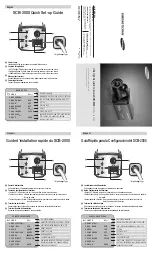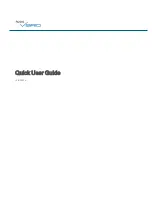
Planning the Installation
Page 16
Table 4: 4-Wire CC Zones
Equipment
FSL or 2-wire CC
4-wire CC
Panel with 10 on-board zones
10 zones
5 zones
EXP-PSU and original EXP-W10
10 zones
5 zones
EXP-WCC and new EXP-W10
10 zones
10 zones
Keypad with 2 on-board zones
2 zones
1 zone
2-wire CC
This uses a single pair of wires for each detector. No end-of-line resistors are used.
Checking cable requirements
Normally, the control unit requires standard 7/0.2 un-screened 4-core alarm cable for
wiring to bus devices. Use one pair for data lines A and B. Use the other pair for 12V and
0V.
Screened cable
For maximum performance in environments where there is electromagnetic noise, use
twisted-pair screened cable with a characteristic impedance of 100-120 Ohms, such as
Belden 8132 or cable designed for RS485.
If screened cable is required:
1.
Avoid earth loops by connecting the screen on the cable to mains earth at the control
unit but not at the keypad or expander.
2.
The continuity of the cable screen is most important and screens MUST be
continuous along the full length of the cable.
3.
Where the cable enters any metal enclosure, ensure the screen is isolated from the
case.
Cable segregation
Segregate the bus cabling from any other wiring, such as mains cables, telephone cables,
computer network cables and R.F. cables.
Keep the bus cable clear of cables supplying sounders, extension loudspeakers or any
other high-current devices.
Cable configuration and length
You can connect devices either in daisy chain (serially), or in star (parallel) configuration at
the control unit connector (Figure 4). For star configurations, the cable length from control
unit to the most distant bus device should be kept short, and should not exceed 100m.
There should be no more than four arms in the star.
For a daisy-chain configuration, the total cable length should not exceed 1,000m.
Note that if there are only two arms in a star configuration, this is equivalent to a daisy-
chain configuration.
















































